 W
WThe military history of Japan chronicles a vast time period over three millennia from the Jōmon 1000 BCE into the modern day. It is characterized by a long period of clan warfare until the 12th century CE. This was followed by feudal wars that culminated in military governments known as the Shogunate. Japanese history is distinguished by that the military class with the Shōgun ruled Japan for 676 years from 1192 until 1868 CE. The Shōgun and samurai warriors were near the apex of the Japanese social structure. Only the aristocratic nobility were nominally above them. The sakoku policy closed Japan from foreigners for 212 years from 1641 to 1853. Feudal militarism transitioned to imperialism in the 19th century after the arrival of Admiral Perry and the elevation of Emperor Meiji. Japan was influenced by western colonial powers and Western imperialism in Asia. This led to Japanese colonialism and rampant imperialism until Japan's defeat in World War II. The 1947 Constitution prohibits Japan's ability to offensively use war against other nations. This led to the Japan Self-Defense Forces. The U.S.-Japan alliance requires the United States to protect Japan and to conduct offensive duties. In 2015, the Constitution was reinterpreted to allow collective self-defense of its allies. Thus Japan has a long military tradition with extensive militarism. Today, Japan has the 4th most-powerful military in the world.
 W
WThe Army War College ; Short form: Rikudai (陸大) of the Empire of Japan was founded in 1882 in Minato, Tokyo to modernize and Westernize the Imperial Japanese Army. Much of the empire's elite including prime ministers during the period of Japanese militarism were graduates of the college.
 W
WA banzai charge is the term used by the Allied forces to refer to Japanese human wave attacks and swarming mounted by infantry units. This term came from the Japanese cry "Tennōheika Banzai" , shortened to banzai, specifically referring to a tactic used by Japanese soldiers during the Pacific War.
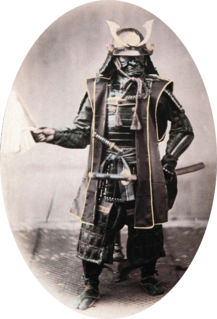 W
WBushidō was the set of codes of honour and ideals that dictated the samurai way of life, loosely analogous to the European concept of chivalry.
 W
WA cataphract was a form of armored heavy cavalryman fielded in ancient warfare by a number of peoples in Europe, Eastern Asia, Western Asia, and Northern Africa.
 W
WBonner Frank Fellers was a US Army officer who served during World War II as military attaché and director of psychological warfare. He is notable as the military attaché in Egypt whose extensive transmissions of detailed British tactical information were intercepted by Axis agents and passed to German Field Marshal Erwin Rommel for over six months, which contributed to disastrous British defeats at Gazala and Tobruk in June 1942. He was considered a protégé of General Douglas MacArthur.
 W
WThe French Military Mission to Japan of 1867-68 was one of the first foreign military training missions to Japan. The mission was formed by Napoléon III, following a request of the Japanese Shogunate in the person of its emissary to Europe, Shibata Takenaka (1823–1877).
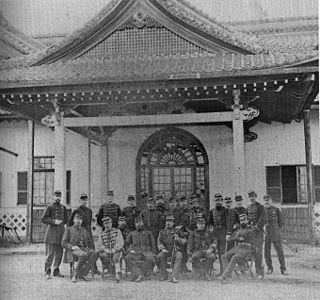 W
WThe 1872–1880 French military mission to Japan was the second French military mission to that country. It followed the first French military mission to Japan (1867–68), which had ended with the Boshin War and the establishment of the rule of Emperor Meiji.
 W
WThe 1884 French Military Mission to Japan was the third French military mission to that country and consisted of five men.
 W
WThe French Aeronautical Mission to Japan (1918-1919) was the first foreign military mission to Japan since the 1890s.
 W
WThe Hamgyong campaign, also known as Katō Kiyomasa's northern campaign, was Katō Kiyomasa's invasion of the northeastern Korean province of Hamgyeong during the Japanese invasions of Korea (1592–1598). The campaign was largely due to the help of Korean defectors who also handed over to the Japanese their princes Sunhwa and Imhae. The Japanese reached the northeastern edge of Hamgyeong, crossed the Duman River, and attacked the Orangai Jurchens, but met with heavy resistance. Katō returned south and took up residence in Anbyeon while Nabeshima Naoshige headquartered in Gilju. By winter local resistance began pushing back at Japanese occupation and laid siege to Gilju.
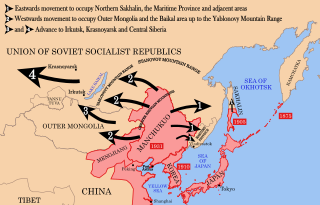 W
WHokushin-ron was a pre-World War II political doctrine of the Empire of Japan which stated that Manchuria and Siberia were Japan's sphere of interest and that the potential value to Japan for economic and territorial expansion in those areas was greater than elsewhere. Its supporters were sometimes called the Strike North Group. It enjoyed wide support within the Imperial Japanese Army during the interwar period, but was abandoned in 1939 after military defeat on the Mongolian front at the Battles of Khalkhin Gol and the signing of Soviet–Japanese Neutrality Pact in 1941. It was superseded by the diametrically-opposite rival policy, Nanshin-ron , which regarded Southeast Asia and the Pacific Islands as Japan's political and economic sphere of influence and aimed to acquire the resources of European colonies while neutralising the threat of Western military forces in the Pacific.
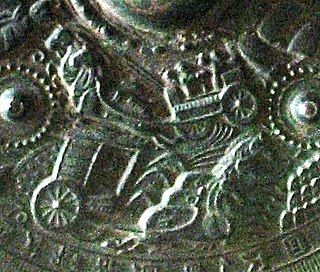 W
WHorses in East Asian warfare are inextricably linked with the strategic and tactical evolution of armed conflict. A warrior on horseback or horse-drawn chariot changed the balance of power between civilizations.
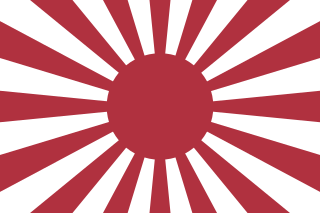 W
WThe Imperial Japanese Army was the official ground-based armed force of the Empire of Japan from 1868 to 1945. It was controlled by the Imperial Japanese Army General Staff Office and the Ministry of the Army, both of which were nominally subordinate to the Emperor of Japan as supreme commander of the army and the Imperial Japanese Navy. Later an Inspectorate General of Aviation became the third agency with oversight of the army. During wartime or national emergencies, the nominal command functions of the emperor would be centralized in an Imperial General Headquarters (IGHQ), an ad hoc body consisting of the chief and vice chief of the Army General Staff, the Minister of the Army, the chief and vice chief of the Naval General Staff, the Inspector General of Aviation, and the Inspector General of Military Training.
 W
WThe Imperial Japanese Army Academy was the principal officer's training school for the Imperial Japanese Army. The programme consisted of a junior course for graduates of local army cadet schools and for those who had completed four years of middle school, and a senior course for officer candidates.
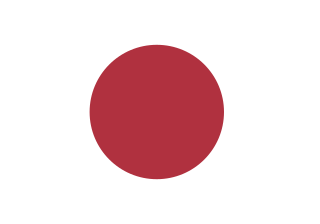 W
WThe Imperial Japanese Army Railway and Shipping Section was the logistics unit of the Imperial Japanese Army charged with shipping personnel, material and equipment from metropolitan Japan to the combat front overseas.
 W
WThe Imperial Rescript to Soldiers and Sailors was the official code of ethics for military personnel, and is often cited along with the Imperial Rescript on Education as the basis for Japan's pre-World War II national ideology. All military personnel were required to memorize the 2700 kanji document.
 W
WThe Japanese invasion of French Indochina was a short undeclared military confrontation between Japan and France in northern French Indochina. Fighting lasted from 22 to 26 September 1940, simultaneous with the Battle of South Guangxi in the Sino-Japanese War.
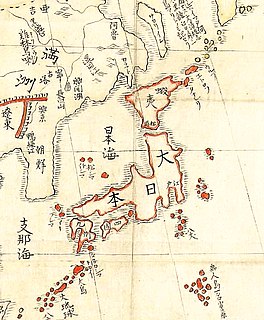 W
WJapan participated in World War I from 1914 to 1918 in an alliance with Entente Powers and played an important role in securing the sea lanes in the West Pacific and Indian Oceans against the Imperial German Navy as a member of the Allies. Politically, the Japanese Empire seized the opportunity to expand its sphere of influence in China, and to gain recognition as a great power in postwar geopolitics.
 W
WThe Japanese colonial empire constituted the overseas colonies established by Imperial Japan in the Western Pacific and East Asia region from 1895. Victories over China and Russia expanded the Japanese sphere of influence, notably in Taiwan and Korea, and southern Sakhalin became a colony of Japan as the Karafuto Prefecture in 1905. At its apex, the Japanese colonial empire was one of the largest empires in history. Including the home islands, the total amount of land under Japanese sovereignty reached 8,510,000 km2 (3,300,000 sq mi) in 1942. By 1943, it accounted for more than 20% of the world's population at the time with 463 million people in its occupied regions and territories, even more populous than the British Empire at its greatest extent.
 W
WThe Japanese program to develop nuclear weapons was conducted during World War II. Like the German nuclear weapons program, it suffered from an array of problems, and was ultimately unable to progress beyond the laboratory stage before the atomic bombings of Hiroshima and Nagasaki and the Japanese surrender in August 1945.
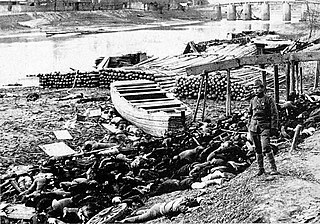 W
WWar crimes were committed by the Empire of Japan in many Asian-Pacific countries during the period of Japanese imperialism, primarily during the Second Sino-Japanese War and World War II. These incidents have been described as an "Asian Holocaust". Some war crimes were committed by Japanese military personnel during the late 19th century, but most Japanese war crimes were committed during the first part of the Shōwa Era, the name which was given to the reign of Emperor Hirohito, until the surrender of the Empire of Japan in 1945.
 W
WThe Kannō disturbance or Kannō incident , also called Kannō no juran, was a civil war which developed from antagonisms between shōgun Ashikaga Takauji and his brother, Ashikaga Tadayoshi, thus dividing and weakening the early Ashikaga shogunate. These events are labeled Kannō after the Japanese era or nengō which was proclaimed by the Northern Court during the years 1350 through 1351 in the Nanboku-chō period of Japanese history. One of the main effects of the Disturbance was the re-invigoration of the Southern Court's war effort due to the flow of renegades from Kyoto who followed Tadayoshi to the Southern capital of Yoshino, near Nara.
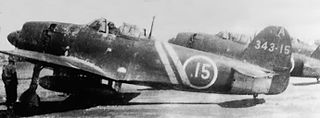 W
WA Kōkūtai (航空隊) was a term used by the Imperial Japanese Navy Air Service (IJNAS) to designate a military aviation unit, similar to the Air Groups in other air arms and services of the time. A Kōkūtai could be based at land or on board aircraft carriers and could contain up to hundreds of men and aircraft. For example, the famous 343 Kōkūtai was a land based fighter group while the 652nd Kōkūtai was a carrier-based bomber group. Kōkūtai were divided into smaller units called Hikōtai, which were the equivalent of a squadron. Kōkūtai were usually divided into three Hikōtai. In general, most pilots and aircrew in the Imperial Japanese Navy Air Service were non-commissioned officers. The word Kōkūtai is abbreviated with the abbreviation "Ku" (空). 343 Ku, for example, stands for 343 Kōkūtai. In the Imperial Japanese Army Air Service (IJAAS) the equivalent unit was the Sentai.
 W
WThe Kweilin incident occurred on August 24, 1938 when a Douglas DC-2 airliner carrying 18 passengers and crew was destroyed by Japanese aircraft in China. There were fourteen fatalities. It was the first civilian airliner in history to be shot down by hostile aircraft. The pilot was American and the crew and passengers Chinese. As it was unprecedented for a civilian aircraft to be attacked, there was international diplomatic outrage over the incident. In the United States, it helped solidify the popular view that Japan was morally wrong in their war against China, but the incident was not enough to spur the US into action against Japan despite Chinese entreaties. The Kweilin was re-built, and destroyed by the Japanese a second time two years later.
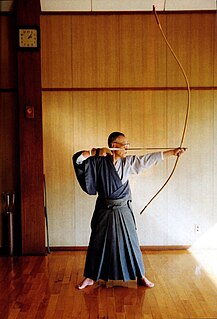 W
WKyūdō (弓道) is the Japanese martial art of archery. Experts in kyūdō are referred to as kyūdōka (弓道家). Kyūdō is based on kyūjutsu, which originated with the samurai class of feudal Japan. Kyūdō is practised by thousands of people worldwide. As of 2005, the International Kyudo Federation had 132,760 graded members.
 W
WThe Kyūshū campaign of 1586–1587 was part of the campaigns of Toyotomi Hideyoshi who sought to dominate Japan at the end of the Sengoku period. Having subjugated much of Honshū and Shikoku, Hideyoshi turned his attention to the southernmost of the main Japanese islands, Kyūshū, in 1587.
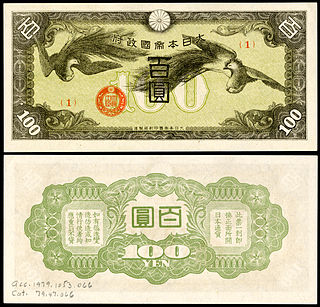 W
WJapanese military yen, commonly abbreviated as JMY, was the currency issued to the soldiers of the Imperial Japanese Armed Forces as a salary. The Imperial Japanese government first started issuing the military yen during the Russo-Japanese War in 1904. The military yen reached its peak during the Pacific War period, when the Japanese government excessively issued it to all of its occupied territories. In Hong Kong, the military yen was forced upon the local population as the sole official currency of the territory. Since the military yen was not backed by gold, and did not have a specific place of issuance, the military yen could not be exchanged for the Japanese yen. Forcing local populations to use the military yen officially was one of the ways the Japanese government could dominate the local economies.
 W
WNanshin-ron was a political doctrine in the Empire of Japan which stated that Southeast Asia and the Pacific Islands were Japan's sphere of interest and that the potential value to the Japanese Empire for economic and territorial expansion in those areas was greater than elsewhere.
 W
WThe term "National Treasure" has been used in Japan to denote cultural properties since 1897, although the definition and the criteria have changed since the introduction of the term. The crafts items in the list adhere to the current definition and have been designated National Treasures according to the Law for the Protection of Cultural Properties that came into effect on June 9, 1951.
 W
WThe Nikolayevsk incident was an international conflict in Nikolayevsk-on-Amur in the Russian Far East between Japan and the Far Eastern Republic during the Japanese intervention. The culmination was the execution of imprisoned Japanese prisoners of war and survivors of Japanese residents without trial from 23 to 31 May 1920, which followed after the armed conflict between the guerrillas and the Japanese army from 12 to 15 March 1920 in Nikolaevsk-on-Amur. A total of 129 Japanese prisoners and a number of local residents and guerrillas were held in the prison at that time. The destruction of the town and the fortress and the execution took place after the evacuation of the entire population due to the offensive of the Japanese army. The Nikolayevsk incident was used by Japan as a pretext to justify the retroactive occupation of Northern Sakhalin, which was occupied by the Japanese on 22 April 1920.
 W
WThe Sempill Mission was a British aeronaval technical mission led by Captain the Master of Sempill and sent to Japan in September 1921, with the objective of helping the Imperial Japanese Navy develop its aeronaval forces. The mission consisted of a group of 30 instructors and support staff, the mission was headed by Colonel Sempill, and stayed in Japan for 18 months.
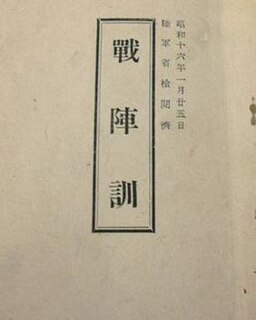 W
WThe Instructions for the Battlefield was a pocket-sized military code issued to soldiers in the Imperial Japanese forces on 8 January 1941 in the name of then-War Minister Hideki Tojo. It was in use at the outbreak of the Pacific War.
 W
WRecords of men who have sex with men in Japan date back to ancient times. Western scholars have identified these as evidence of homosexuality in Japan. Though these relations had existed in Japan for millennia, they became most apparent to scholars during the Tokugawa period. Historical practices identified by scholars as homosexual include shudō (衆道), wakashudō (若衆道) and nanshoku (男色).
 W
WA Taiwanese Imperial Japan Serviceman is any Taiwanese person who served in the Imperial Japanese Army or Navy during World War II whether as a soldier, a sailor, or in another non-combat capacity. According to statistics provided by Japan's Ministry of Health, Labour and Welfare, during the Second Sino-Japanese War and the subsequent World War II, a total of 207,183 Taiwanese served in the military of Imperial Japan and 30,304 of them were declared killed or missing in action.
 W
WThis article deals with the history and development of tanks of the Japanese Army from their first use after World War I, into the interwar period, during World War II, the Cold War and modern era.
 W
WThe Tientsin incident (天津事件) was an international incident created by a blockade by the Imperial Japanese Army's Japanese Northern China Area Army of the British settlements in the north China treaty port of Tientsin in June 1939. Originating as a minor administrative dispute, it escalated into a major diplomatic incident.
 W
WThe Treaty Faction was an unofficial and informal political faction within the Imperial Japanese Navy in the 1920s-1930s of officers supporting the Washington Naval Treaty.
 W
WThis is a list of wars involving Japan.
 W
WYabusame (流鏑馬) is a type of mounted archery in traditional Japanese archery. An archer on a running horse shoots three special "turnip-headed" arrows successively at three wooden targets.